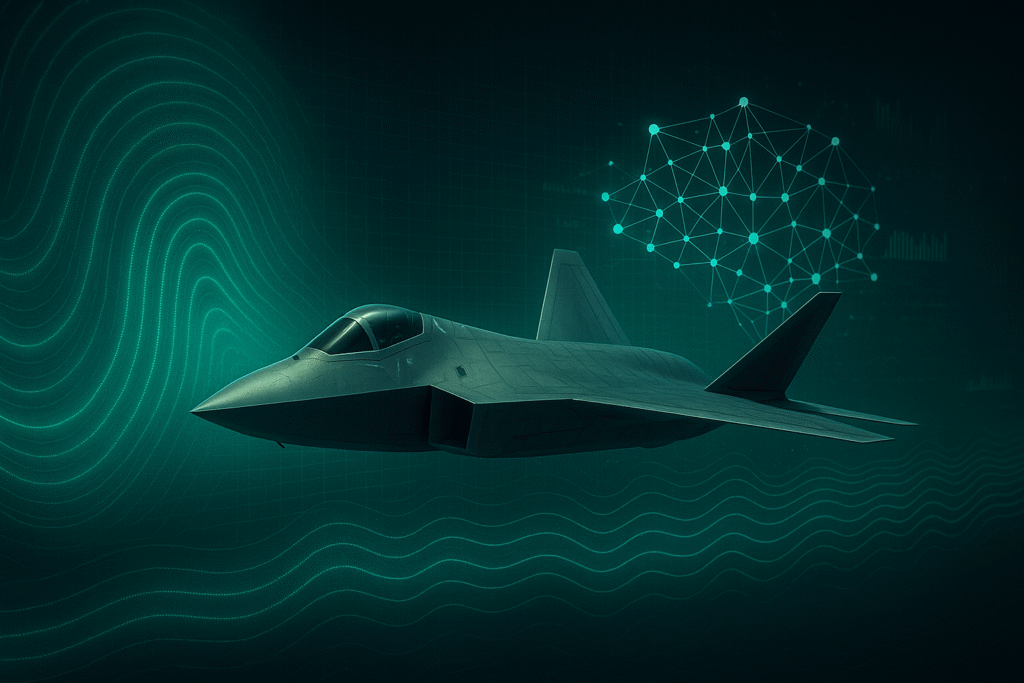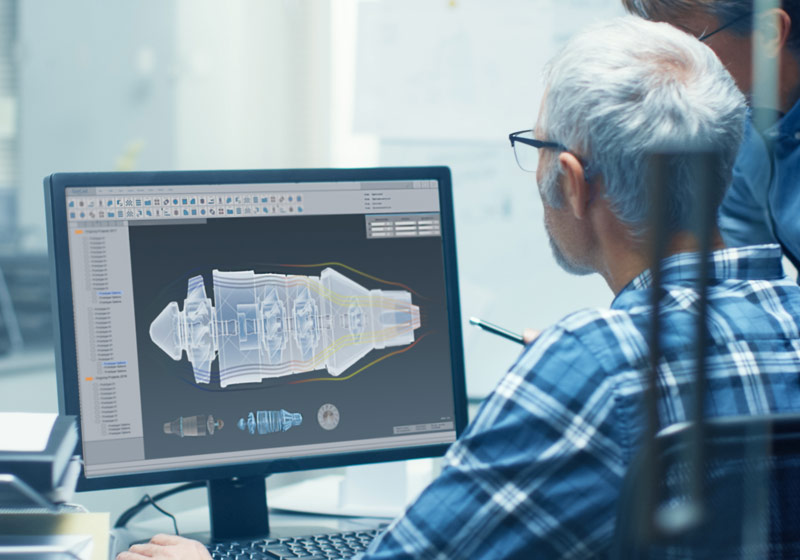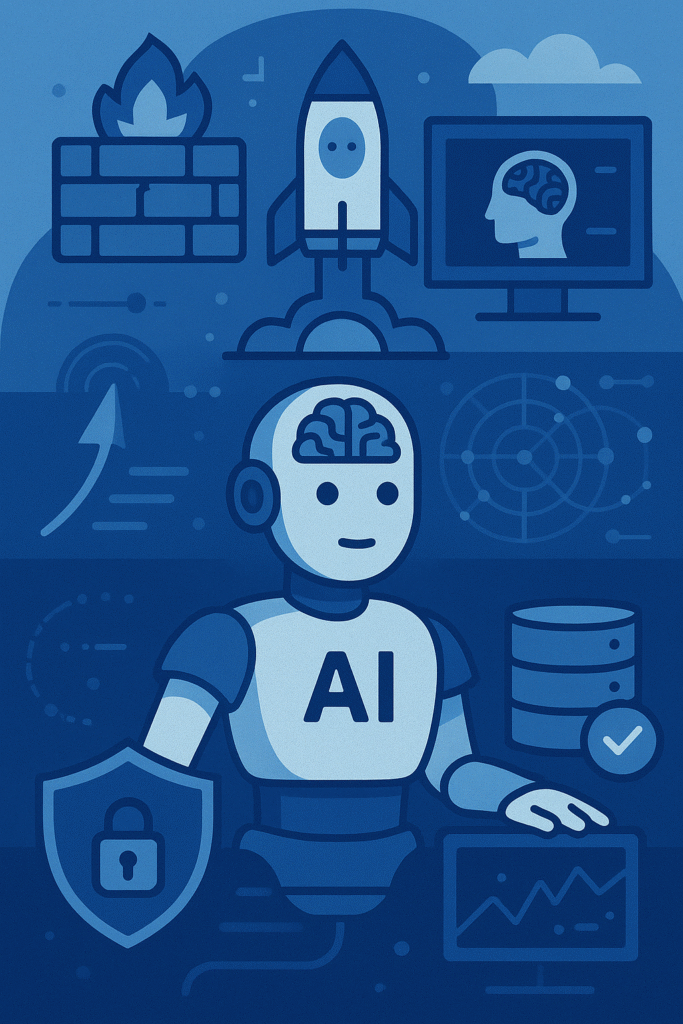Introduction: Making Invisibility Smarter
Stealth defines survival in modern warfare. Yet, as radar systems grow more sophisticated, designing truly “invisible” aircraft, vessels, and vehicles has become an enormous challenge.
Traditional Radar Cross-Section (RCS) analysis—vital for understanding radar visibility—relies on months of simulations and testing. Enter artificial intelligence, transforming how engineers analyze electromagnetic signatures and optimize stealth performance in weeks instead of years.
A single decibel improvement in RCS can mean mission success or exposure. With AI-powered analytics, aerospace and defense teams can now process terabytes of RCS data, spot optimization patterns, and generate design recommendations with unprecedented precision and speed.
The Challenge: Complexity Beyond Human Scale
RCS management is a multi-physics problem involving geometry, materials, and electromagnetic behavior.
Traditional methods depend on:
- Massive CFD and EM simulations (ANSYS HFSS, CST Studio Suite)
- Physical model testing in anechoic chambers
- Iterative design cycles that span 18–36 months
Each new stealth platform can generate 50+ TB of data across thousands of frequencies and angles—an impossible volume for manual analysis. The result: slow progress and missed opportunities.
Where AI Changes the Game
From Data Bottlenecks to Design Acceleration
AI models can learn complex electromagnetic behaviors and predict radar reflections in seconds. Machine learning techniques—deep neural networks, GANs, reinforcement learning, and transformers—empower teams to explore millions of design combinations with minimal computation.
Core Advantages
- Speed: Reduces design cycle time by 60–80%
- Insight: Identifies hidden relationships in massive RCS datasets
- Precision: Predicts radar signatures with 95%+ accuracy
- Automation: Generates complete design briefs and reports automatically
GPT Applications in RCS Synthesis
Large language models like GPT-4 go beyond analytics—they interpret electromagnetic data and summarize complex results into clear engineering narratives.
AI systems can now:
- Generate automated technical reports highlighting frequency bands, reflection hotspots, and design weaknesses
- Recommend shape or material changes to lower radar visibility
- Correlate RCS data with specific radar threats for mission-specific optimizations
- Transfer learnings across air, naval, and ground platforms
In effect, GPT converts electromagnetic chaos into structured, actionable intelligence.
Real-World Impact
Next-Gen Fighter Optimization
A defense contractor trained an AI model on 100,000+ simulations, cutting RCS by 15 dB across X-band frequencies while maintaining aerodynamics. The process that once took 18 months was completed in six weeks.
Naval Fleet Modernization
AI synthesized data from 50 ship classes, identifying shared stealth geometries that informed both new builds and retrofits—improving overall fleet survivability.
Ground Vehicle Applications
Army research teams used machine learning to redesign armored vehicles, achieving a 20% stealth improvement and cutting design time from 24 months to 8 months.
How It Works: Inside AI-Driven RCS Analysis
- Data Preprocessing: Normalizes frequency bands, polarization states, and environmental factors.
- Feature Extraction: Converts complex 3D geometries into manageable data vectors.
- Neural Processing:
- CNNs detect scattering features
- RNNs capture frequency-dependent behavior
- Transformers merge geometry, material, and environment data
- Physics-Informed Networks integrate Maxwell’s equations for realism
- Integration: AI links directly with CATIA, NX, and ANSYS for seamless geometry and simulation updates—all within ITAR-compliant environments.
Advanced Capabilities
- Multi-Objective Optimization
AI balances stealth with aerodynamics, structural strength, and cost—avoiding the tradeoffs that once slowed innovation.
- Real-Time Mission Planning
AI predicts radar exposure in real time, guiding optimal flight paths and adaptive configurations. Future systems may even modify their signatures mid-mission via smart materials and reconfigurable surfaces.
- Metamaterial & RAM Innovation
AI accelerates the creation of new radar-absorbing materials and metamaterial structures, simulating absorption efficiency across frequencies, temperatures, and sea states faster than traditional lab testing.
Challenges & Solutions
- Data Fragmentation: Standardize RCS datasets with IEEE/NATO schemas and automated quality checks.
- Compute Limitations: Use secure, distributed GPU clusters or hybrid HPC frameworks.
- Explainability: Incorporate interpretable AI models that show which geometry changes drive stealth gains.
- Security: Apply federated learning and differential privacy to protect classified RCS data.
ROI and Measurable Outcomes
Defense programs implementing AI in RCS analysis report:
- 60–80% faster development cycles
- 10–25 dB greater signature reduction
- $50–200 million saved in testing and analysis costs
- 90% reduction in manual data processing effort
These gains are reshaping the economics of stealth development—turning AI from an advantage into a necessity
Future Trends
- Quantum Machine Learning: Enables exponentially larger electromagnetic optimizations.
- Digital Twins: Continuous, real-time RCS performance updates tied to operational data.
- Autonomous Design Systems: AI platforms that generate and validate stealth configurations with minimal human input.
Tomorrow’s stealth platforms will evolve dynamically—learning, adapting, and improving through AI feedback loops.



